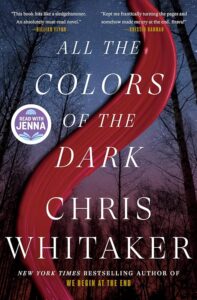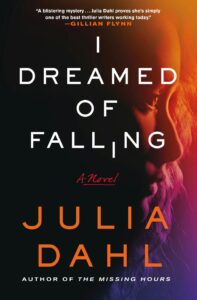Putting kids into crime fiction can be tricky. Even those of us with the blackest of hearts sometimes cringe when a child (or, let’s be honest, a pet) is harmed on the page. But there are lots of ways—and reasons—to bring children into dark stories.
My latest novel, I Dreamed of Falling, is about the death of Ashley Lilian, a young mother living in a small Hudson Valley town. The story follows her boyfriend, Roman, who is the only reporter for the town’s newspaper, as he tries to figure out what led to her death. Roman and Ashley share a son, 4-year-old Mason, and creating his character was one of the best parts of writing this book. He serves as a constant reminder of Ashley’s legacy, and the mistakes they’ve made as a family. But he also brings Roman tremendous joy in a terrible time.
Happily, early readers seemed to like Mason, too.
Kristopher Zgorski of BOLO Books wrote in his review: “A parent herself, Julia Dahl, crafts the scenes with four-year-old Mason so they leap off the page—proving to be utterly authentic and truly unforgettable. Readers will palpably feel this sensitive child’s overwhelming loss and the unbelievable confusion it causes him.”
And Henriette Thompson of First Clue Reviews wrote: “All the characters here are memorable, but four-year-old Mason and his bottomless, bewildered grief are particularly well drawn.”
In that spirit, I created a list of crime fiction that features children.

Jordan Harper, She Rides Shotgun
Eleven-year-old Polly is the beating heart of this Edgar-winning first novel by Jordan Harper. Taken in the first chapter by her ex-con father, she is thrown into his world of violence, playing the role of both victim and savior. Harper draws Polly lovingly, balancing her genius-level natural intelligence and psychological immaturity with the emotional clarity that children possess and that too many adults have long lost. I can’t wait for the film version—out next year!

Chris Whitaker, All the Colors of the Dark
Without giving too much away, Whitaker’s stunning latest novel gives us two generations of pre-teen and young teen characters. I have no idea if Whitaker has children of his own, or children in his life, but what he gets so right about them is that young people are just as psychologically complicated as adults. They feel as deeply, observe as keenly, and often aren’t jaded or experienced enough to censor themselves around others. Whitaker draws that perfectly.

Lionel Shriver, We Need to Take About Kevin
In this chilling novel, Shriver writes from the point of view of a mother who knows, even when he’s still in the womb, that something is very wrong with her son. Little Kevin is one of the most frightening characters I’ve ever read. A particular scene involving something he does to a classmate with a skin condition will live in my mind forever – for better or worse. WE NEED TO TALK ABOUT KEVIN is a novel about the lengths to which a parent will go to love and protect their child, and it’s also, without a doubt, the scariest book I’ve ever read.

Emma Donoghue, Room
While not marketed as crime fiction, Room is the story of an ongoing crime, and its aftermath. The book is narrated by 5-year-old Jack, whose entire life has played out in a single room (a shed) where he is held with his mother, who was kidnapped two years before he was born. What is so astonishing about this book is the way, in the word’s of New York Times reviewer Aimee Bender, “Jack’s eyes remake the familiar.” By privileging the little boy’s voice, we see the world anew, and it is both beautiful and utterly terrifying.
***


















